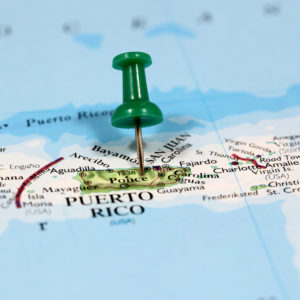Even before Hurricane Maria triggered a massive blackout that left millions of Puerto Ricans without electricity, the island’s dysfunctional electricity network was a poster child for inefficiency, waste and exorbitant costs.
Now Puerto Rico has the opportunity to become a model for the future of energy systems that can be clean, resilient and affordable.
The torturous effort involved in rebuilding Puerto Rico’s power grid brings into sharp relief a struggle that is playing out across the United States as the growing popularity of renewable energy, and advances in technology, collide with an outdated electricity framework.
Homeowners are increasingly interested in having more control over their energy usage and production. Many are updating their homes to make them more energy efficient by installing smart thermostats, adopting solar power or adding battery storage to maintain power even during a grid failure. These changes — especially the powerful combination of solar plus battery storage — are upending the outdated energy system by liberating homeowners from their dependency on the old and antiquated grid.
Despite evolving consumer preferences, utility companies are resisting this wave of progress that threatens a business model that has served them well. Consumers are demanding more flexibility and clean energy. But utilities want to maintain the status quo. Like a previous battle over AT&T’s monopoly control of telecommunications in the early 1980s, this clash may ultimately be settled in court or in Congress.
The tension between customer control and utility control is playing out with real-life consequences every day in Puerto Rico as homeowners with rooftop solar power try to rejoin the poorly mended electricity grid. After several months without electricity, many homeowners with solar are questioning why they need the unreliable grid at all.
I know this because my company has installed nearly 9,000 residential rooftop solar systems in Puerto Rico, making us the second largest provider of residential energy, behind the island’s public utility, known as PREPA.
PREPA has little economic incentive to allow homeowners to self-generate electricity independent from the grid. It wants residents to be totally reliant on the utility for electricity to keep customers captive and protect their profits.
Homeowners who have gone solar on the U.S. mainland face similar challenges. Although some utilities are more accommodating than others, the expanding use of residential rooftop solar energy and the breathtaking speed at which solar plus storage capabilities have emerged are an obvious threat to traditional electric utilities. It’s in their interest to try to minimize competition, and so they do, many looking to restrict consumer choice to just one provider: the monopoly utility.
In response to this anti-competitive behavior, consumers and homeowners are starting to challenge the need for the grid. Consumer demand and the advent of ground-breaking technologies are ripping apart the old-line, industrial age system. It’s time for monopoly electricity providers to take note.
In an ideal world, Congress would take action to replace the current monopoly system with a decentralized system that empowers consumers. We should let the market work and allow consumers to pick the winners and losers, not stack the deck in favor of monopoly utilities. That’s exactly what happened when the breakup of AT&T ended a century-old telephone monopoly, and we are all better for it.
Puerto Rico can help lead the way toward this more consumer-friendly, environmentally responsible and affordable energy future. The Puerto Rican government should insist that PREPA give homeowners the ability to install solar and battery storage without going through the utility’s undefined and onerous processes.
As Puerto Rico emerges from the darkness, its uneven recovery is shining a light on a challenge that will shape the future of electricity across the United States

